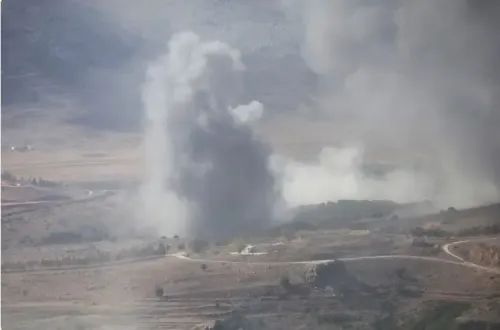Cyclone Alfred Reveals Significant Flaws in Australia’s Infrastructure: Expert

Synopsis
Key Takeaways
- Cyclone Alfred caused significant infrastructure damage in Australia.
- Over 300,000 homes and businesses suffered power outages.
- Experts urge for improvements in disaster preparedness.
- Natural vegetation can mitigate flooding effects.
- Urban areas can adapt features to manage water better.
Sydney, March 11 (NationPress) Cyclone Alfred, which resulted in extensive power outages and flooding across Queensland and New South Wales (NSW), has revealed serious vulnerabilities in Australia’s infrastructure, according to an expert.
"We may not be so fortunate next time. Australia must take Cyclone Alfred as a vital wake-up call to strengthen our critical infrastructure against disasters," stated Cheryl Desha, visiting professor at the School of Engineering and Built Environment, Sciences Group, Griffith University, in an article published on Monday in The Conversation.
Cyclones are intricate systems that combine several hazards such as intense winds, flooding, storm surges, and coastal erosion, making their impacts particularly tough to forecast, Desha explained, noting that Alfred lingered off the coast for almost two weeks, fueled by the warm waters of the Coral Sea.
Its trajectory became even more erratic due to the influence of a new moon, leading to abnormally high tides.
"Thousands of residents are cleaning up following ex-Cyclone Alfred, which has damaged homes and vehicles, flooded roads, and eroded beaches," Desha, who is also affiliated with Natural Hazards Research Australia, mentioned.
Record levels of power outages were reported, affecting over 300,000 households and businesses across both Queensland and NSW. Alfred also caused flooding and destruction to roads, resulting in numerous road closures and traffic signal failures.
As climate change escalates, extreme weather incidents are anticipated to become more frequent and severe. It is crucial to diminish the likelihood of infrastructure failures during such events, Desha emphasized, highlighting the importance of interconnected vegetation, including rows of mature trees, wetlands, and mangroves, which can help slow down and retain water, reducing its erosive impact, thereby lowering the risk of land degradation and infrastructure damage.
This vegetation enables water to percolate into the soil, naturally filtering out debris and enhancing water quality, she added. Furthermore, city parks can be adapted or enhanced to act as detention basins, capturing water until it can drain away safely, as reported by Xinhua news agency.
Urban infrastructure can also draw inspiration from natural features like swales and earthen mounds by incorporating engineered channels and elevated landforms that direct water away from communities and essential infrastructure, channeling it into storage areas either above or below ground, Desha noted.
The author referenced a 2020 study in Fiji illustrating how mangroves play a crucial role in safeguarding coastal communities against future wind damage. However, approximately 17 percent of mangroves have been lost since European settlement in Australia.









